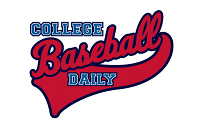 The NCAA Playing Rules Oversight Panel approved a rule change that will allow umpires to conference on whether or not a fielder caught a ball in the outfield. The current rules allowed umpires to conference on certain calls but they have now added catches in the outfield to the criteria.
The NCAA Playing Rules Oversight Panel approved a rule change that will allow umpires to conference on whether or not a fielder caught a ball in the outfield. The current rules allowed umpires to conference on certain calls but they have now added catches in the outfield to the criteria.
The panel members also approved expanding the experimental video replay rule to include “catch” and “no catch” plays. Starting in 2015, conferences will also be able to request through the rules committee to use the experimental video replay rule in regular season games in addition to conference tournament games.
The “catch” or “no catch” scenarios will join the following plays that can be reviewed:
- deciding if an apparent home run is fair or foul;
- deciding whether a batted ball left the playing field for a home run or a ground-rule double;
- spectator-interference plays (only on plays involving home run balls); and
- deciding if a batted ball is fair or foul.
As of right now, the replay rules have not been used since their adoption before the 2012 CWS during a game in Omaha.
Other rule changes are listed below.
Hit Batter
Starting in 2015, a batter must make an attempt to avoid being hit by the ball. If the umpire rules the batter did not make an attempt to get out of the way, or that he leaned into the path of the ball of the ball or intentionally tried to be hit by the ball, a pitch inside the strike zone that touches the batter will be called a strike. If the pitch is outside the strike zone, it will be called a ball. In either case, the batter will not be awarded first base.
Foul Poles
The panel approved a proposal that requires all foul poles on fields operated by NCAA schools to be painted fluorescent yellow by the 2016 season.
The NCAA Baseball Rules Committee received feedback that some facilities have white, red or blue foul poles, but fluorescent yellow is the best color to help umpires determine whether a potential home run is foul or fair.
Seven Inning Games
Panel members approved allowing a seven-inning game that was originally scheduled as part of a doubleheader but cannot be started – or had been halted or suspended – to be played as a seven-inning contest the following day or at a future time.
However, stand-alone seven-inning baseball games are prohibited in NCAA play, so the NCAA Baseball Rules Committee wanted to provide specific guidance to ensure the double-header rules are applied consistently around the country.
Full NCAA column on the article available here.

2 comments
[…] NCAA announced on late Tuesday evening several changes to college baseball with most of them regarding the use of replay and minor changes including the color of the foul […]
[…] their season in Las Vegas this weekend. The NCAA announced their rule changes back in August. It was the beginning of football season so I’ll admit I didn’t pay attention. […]
Comments are closed.